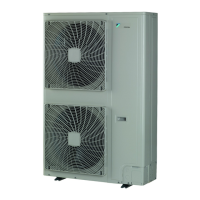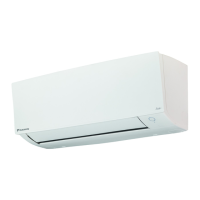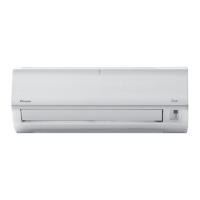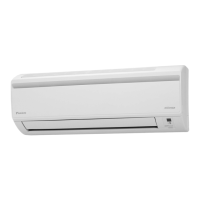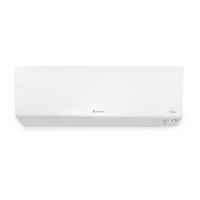Do you have a question about the Daikin SIESTA SERIES and is the answer not in the manual?
Strict precautions for R410A refrigerant, focusing on cleanliness, dryness, and tightness.
General guidance for unit installation, including pipe branching kits and component checks.
List of included accessories for installation, such as manuals, clamps, and labels.
Method to prevent the unit from falling over by securing it with wires and fasteners.
Guidance on properly disposing of drain water from the outdoor unit to prevent splashing.
Specifications for piping material, temper grade, and minimal thickness for R410A.
Table detailing maximum allowable piping lengths and height differences for various models.
Methods to prevent insects or small animals from entering the outdoor unit's electrical box.
Important notes on handling stop valves, including their closed state at shipment and proper operation.
Information on field pipes installation in four directions and related diagrams for routing.
Care instructions for the valve cover, including its sealed area and proper tightening.
Guidelines for processing flares and tightening torques for refrigerant piping connections.
Precautions for using the service port, including refrigerant recovery and hose handling.
Advice on connecting piping, preventing contact with the compressor, and insulation.
Importance of using nitrogen blow during brazing to prevent oxidation and ensure system integrity.
Correct nitrogen pressure setting (0.02 MPa) for brazing to prevent pipe damage.
Instructions for using vacuum pumps for evacuation, emphasizing 2-stage pumps and leak testing.
Step-by-step procedure for conducting leak tests according to EN378-2 standards.
Details on R410A refrigerant, its GWP, and labeling requirements for fluorinated greenhouse gases.
Safety precautions for servicing the unit when the refrigerant system is opened.
Guidelines for adding refrigerant based on piping length and model specifications.
Initial steps before pumping down, including power cutoff and panel opening.
Step-by-step procedure for performing the pumping-down operation to recover refrigerant.
General safety precautions for electrical wiring installation, including power disconnection and wire types.
Specific precautions for power supply and inter-unit wiring, including terminal types and tightening torques.
Essential checks before test run, covering electrical wiring, refrigerant piping, and extra refrigerant.
Step-by-step procedure for performing the test run in cooling mode and checking operation.
| Refrigerant | R32 |
|---|---|
| Power Supply | 220-240 V, 50 Hz |
| Type | Split System |
| Features | Sleep Mode |
| Compressor Type | Inverter Rotary |
